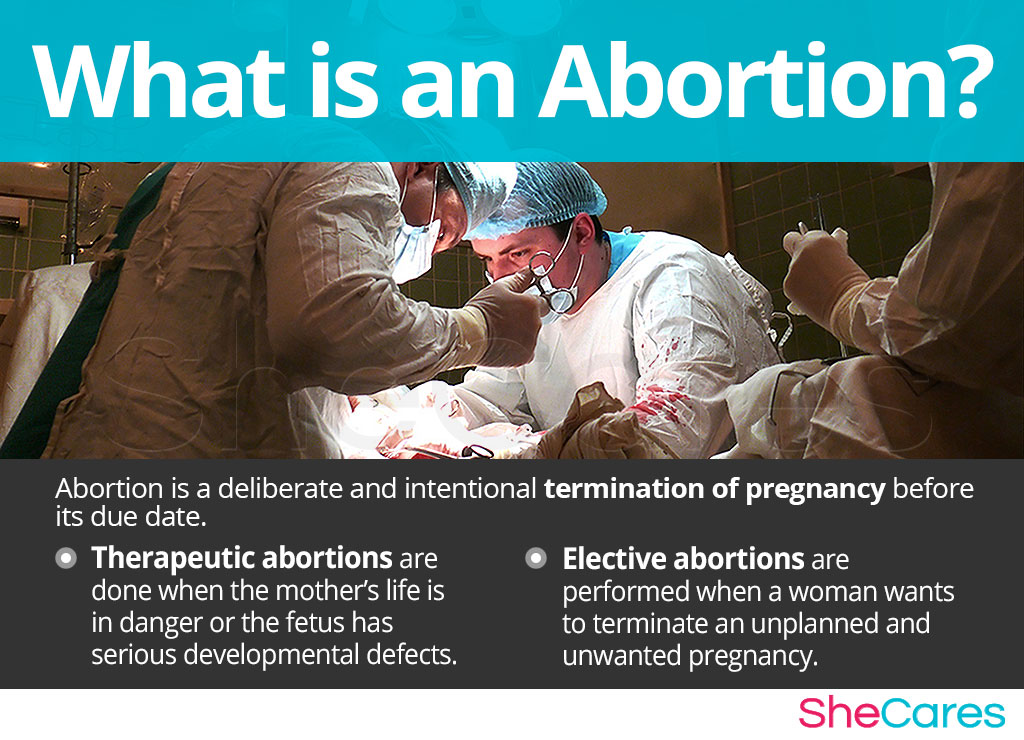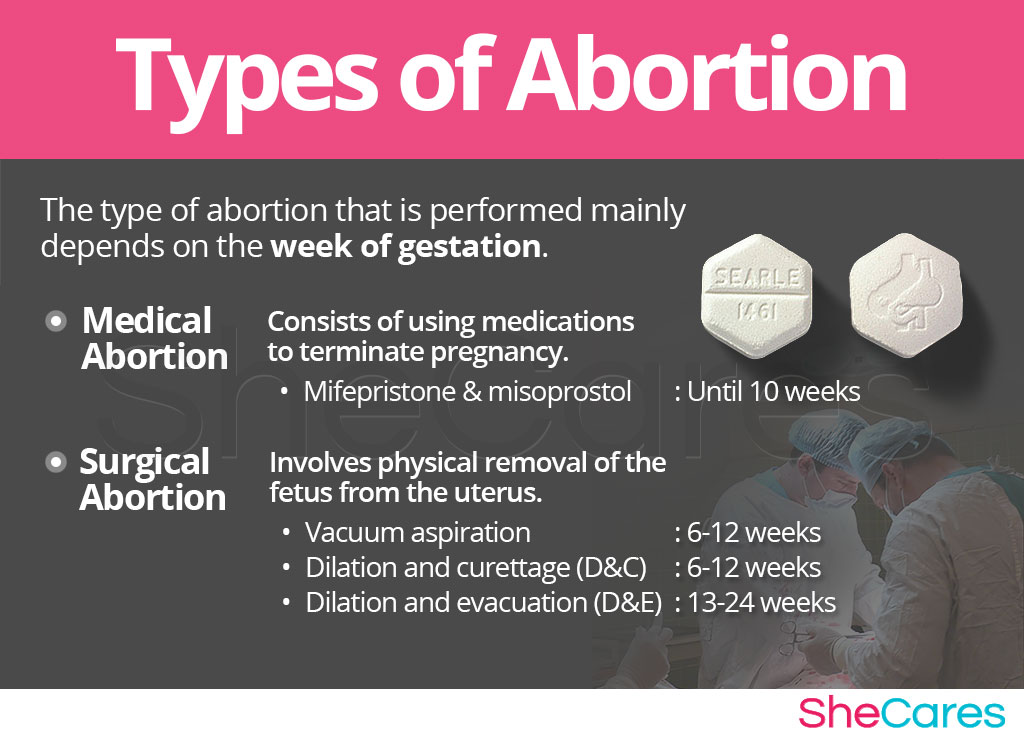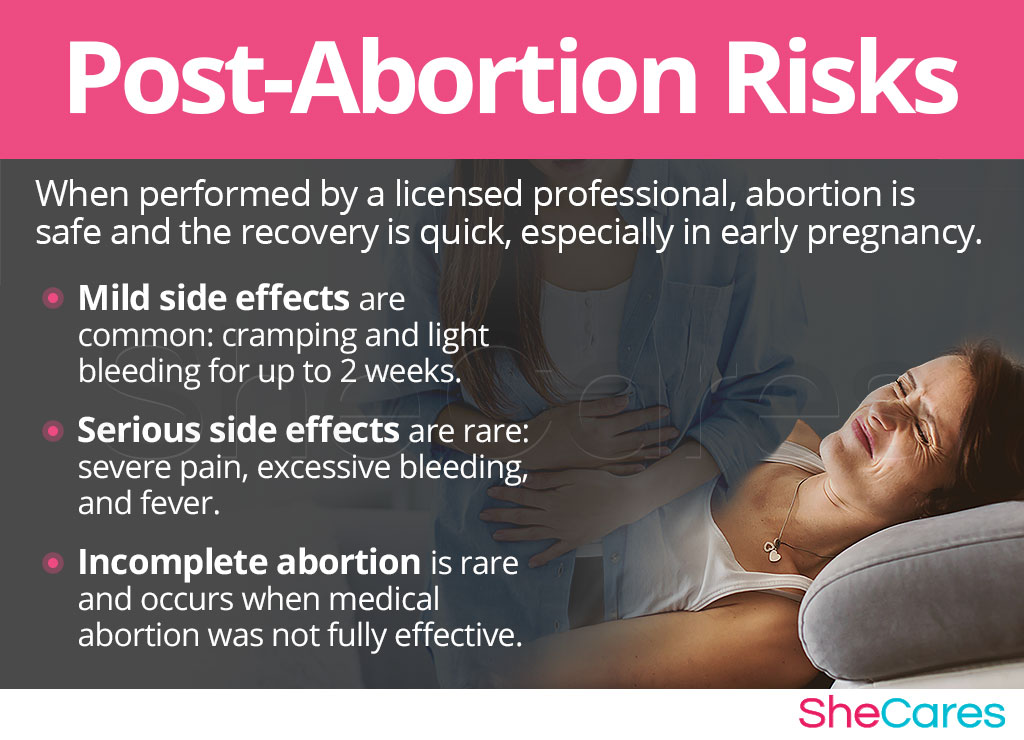What is an Abortion?
Abortion means a deliberate and intentional termination of pregnancy. As such, it is often called an induced abortion.
It is different from a spontaneous or natural abortion, which refers to a stillbirth or miscarriage that happens without human intervention.
Reasons for Abortion
Women might undergo an abortion for a number of reasons, which can be generally grouped into two categories:
Therapeutic abortion consists of terminating a complicated pregnancy when the fetus has serious developmental defects or the mother's life would be in danger if pregnancy was to progress. It can also be performed after an incomplete miscarriage to remove the remaining fetal tissue.
Elective abortion comprises of terminating an unplanned and unwanted pregnancy due to a woman's personal choice.
Legal Issues of Abortion
Abortion laws vary greatly around the world in terms of permitting circumstances and pregnancy stage.
Most countries allow abortion in case the mother's life is at risk.
More than half also allow it for the sake of the physical and mental health of the mother.
About 50% permit abortion if pregnancy is a result of rape or incest as well as if fetal development is significantly impaired.
About 30% of the countries worldwide allow abortion per mother's request, regardless of the reasons.
Controversy around Abortion
Abortion is a controversial subject in terms of politics, morality, and religion. The main point dividing the commentators is the time the fetus is considered a human being or human life form, whether it be at conception or at birth.

Types of Abortion
The type of abortion procedure that will be performed mainly depends on how far along a woman is in her pregnancy.
Medical Abortion
Medical abortion, also referred to as the abortion pill, is performed through an administration of medications to terminate pregnancy. It involves taking two drugs:
Mifepristone blocks progesterone, the hormone that normally helps thicken the uterine lining to support pregnancy. Without progesterone, the embryo does not stay implanted in the uterus.
Misoprostol triggers uterine contractions to expel the embryo.
Surgical Abortion
Surgical abortion is done on an out-patient basis, which does not require a hospital stay.
Vacuum aspiration, either manual or machine, is a common type of abortion procedure. It takes about 15 minutes and consists of using a gentle suction to remove the embryo or the fetus along with the placenta from the uterus.
Dilation and curettage (D&C) consists of widening the cervix to introduce a surgical instrument, called a curette, into the uterus to withdraw the fetus. It takes about 20 minutes. D&C is sometimes done after vacuum aspiration to ensure all fetal tissue has been removed.
Dilation and evacuation (D&E) combines the first two abortion procedures along with additional surgical instruments to remove the fetus. D&E takes about 30 minutes, but the medications to soften the cervix have to be taken about two hours prior.
Additionally, there are a number of late-term abortion procedures, such as induction abortion or intact dilation and extraction abortion (D&X), that are controversial and heavily regulated because they are performed on a fetus that is more developed and could potentially survive outside the womb.

Abortion by Week of Gestation
First Trimester Abortion (0 – 12 weeks)
About 90% of abortions are performed during the first trimester.
During the first three months of pregnancy, women have three options: the abortion pills, vacuum aspiration, or D&C. The abortion pill is generally permitted until the 9th or 10th week of gestation, while the other two procedures are generally permitted until 12 weeks.
Second Trimester Abortion (13 – 26 weeks)
In rare cases, a D&C will be allowed in the first week of the second trimester.
Normally, however, women will have to undergo a D&E after the 13th week, which is the main procedure used in the second trimester. D&E abortion is generally permitted until about 24 weeks of gestation.
Third Trimester Abortion (27 – 40 weeks)
In most U.S. states, an abortion after 24 weeks is only permitted for medical reasons in rare cases of serious complications concerning the mother's or the baby's life, most commonly through an induction abortion. Many countries ban late-term abortions if a fetus can survive independently outside the womb, which is around 24 to 26 weeks of gestation.
Post-Abortion Risks
When performed by a licensed professional in a medical facility, a surgical abortion is safe, and the recovery is quick, while medical abortion does not carry any major risks. However, the risks of complications do increase with the length of pregnancy.
Possible Post-Abortion Risks
Mild side effects after abortion include cramping and bleeding, which might continue for up to two weeks.
Rare but serious post-abortion side effects that require doctor's attention include severe pain, excessive bleeding, fever, or nausea, among others. They might indicate an infection or damage to the reproductive organs.
An incomplete abortion is a rare occurrence, which happens when medical abortion did not result in a total termination of the pregnancy. A surgical intervention is, therefore, necessary as a follow-up.
Alleged Health Risks after Abortion
There are numerous misconceptions about the effects on a woman's health after having an abortion. Some include the following:
Pregnancy after Abortion. There is no evidence that undergoing an abortion in the past increases a woman's risk of infertility. Although ovulation typically returns about two weeks after pregnancy termination, women should avoid getting pregnant after abortion for about three months if it was surgical and two weeks if it was medical.
Psychological Trauma. Although an abortion can take a toll on a woman's feelings, it is a common misconception that it leaves a lifelong scar on her psyche. Because individual experiences can vary greatly, it is important to seek professional help when overwhelmed with unfamiliar emotions.
Breast Cancer. Recent scientific findings did not find evidence that getting an abortion leads to breast cancer.

Key Takeaways
Abortion, defined as an intentional termination of a pregnancy, is a difficult decision for most women. It can be performed for therapeutic reasons when a mother's life is in danger or the fetus has serious developmental defects as well as elective reasons as when pregnancy has been unplanned and unwanted. Because it is a highly controversial subject around the world, abortion is strongly regulated by laws, which determine until which week of gestation pregnancy termination is permitted and in which circumstances. There are two general types of abortions, medical and surgical, the latter which consists of a number of procedures depending on pregnancy stage. When done by a licensed medical professional, a legal abortion is safe and has not been found to have long-lasting effects on a woman's reproductive health.
Sources
- American College of Obstetricians and Gynecologists. (2015). Induced Abortion. Retrieved January 3, 2019 from https://www.acog.org/Patients/FAQs/Induced-Abortion
- Better Health. (2018). Abortion Procedures. Retrieved January 3, 2019 from https://www.betterhealth.vic.gov.au/health/healthyliving/abortion-procedures-surgical
- BMC Women's Health. (2013). Understanding why women seek abortions in the US. Retrieved January 3, 2019 from https://www.ncbi.nlm.nih.gov/pmc/articles/PMC3729671/
- CDC. (2018). Abortion. Retrieved January 3, 2019 from https://www.cdc.gov/reproductivehealth/data_stats/abortion.htm
- Columbia University. (n.d.). Abortion. Retrieved January 3, 2019 from http://www.columbia.edu/itc/hs/pubhealth/modules/reproductiveHealth/abortion.html
- Health Human Rights. (2017). Abortion Law and Policy around the World. Retrieved January 3, 2019 from https://www.ncbi.nlm.nih.gov/pmc/articles/PMC5473035/
- Linacre Quarterly. (2016). Abortion and public health: Time for another look. Retrieved January 3, 2019 from https://www.ncbi.nlm.nih.gov/pmc/articles/PMC5102173/
- Mayo Clinic. (n.d.). Medical Abortion. Retrieved January 3, 2019 from https://www.mayoclinic.org/tests-procedures/medical-abortion/about/pac-20394687?p=1
- Medline Plus. (2018). Abortion. Retrieved January 3, 2019 from https://medlineplus.gov/abortion.html
- Planned Parenthood. (n.d.). Abortion Information. Retrieved January 3, 2019 from https://www.plannedparenthood.org/learn/abortion
- University of California. (2018). Politics of Abortion. Retrieved January 3, 2019 from http://www.soc.ucsb.edu/sexinfo/article/politics-abortion
